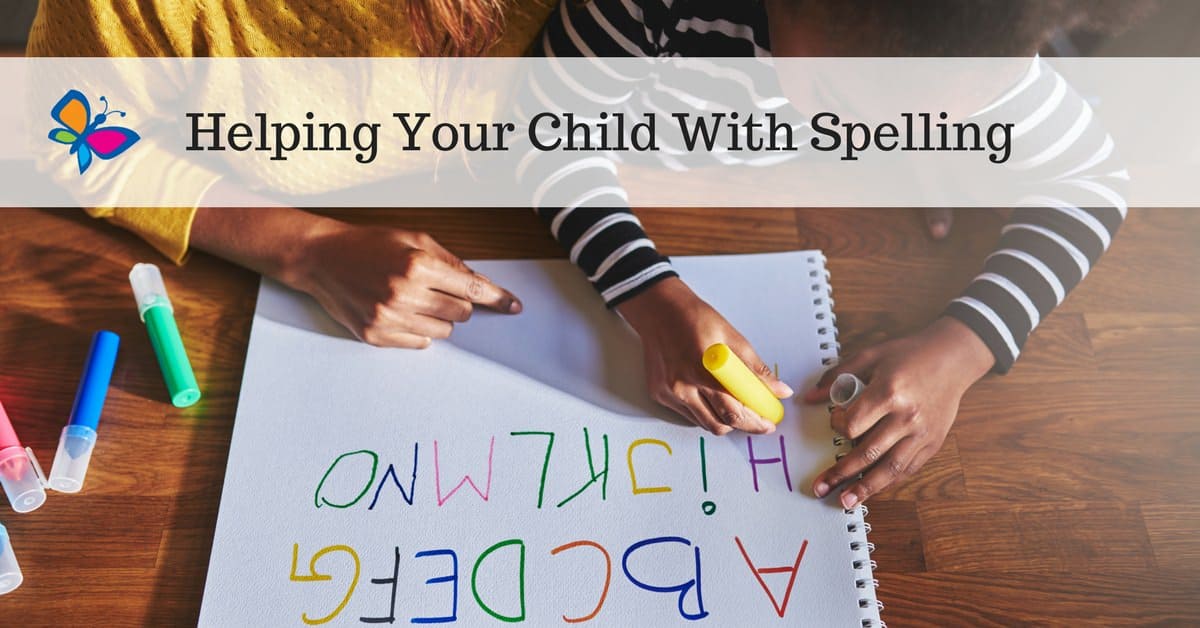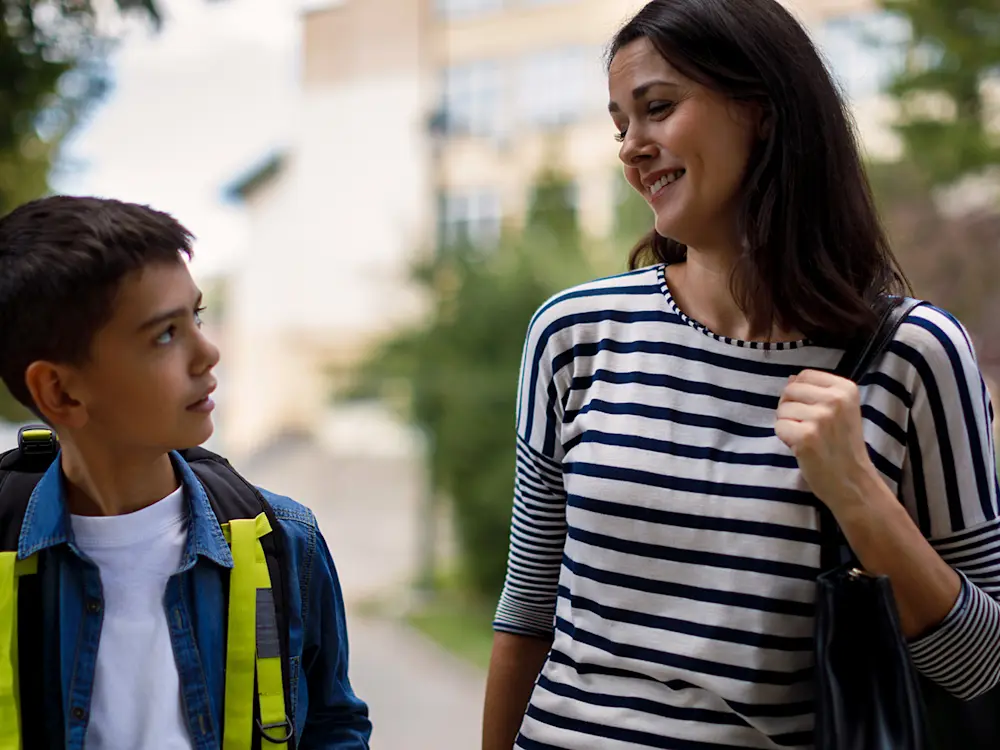https://childdevelopmentinfo.com/learning/tips-for-helping-kids-and-teens-with-homework-and-study-habits/spelling

Children who fall behind classmates in spelling, who forget words easily, or
who mix up letters when writing, are children who need special, loving,
considerate attention regularly at home to help them overcome their unique learning problems. Forcing an activity on them or making it over-demanding only serves to intensify the child’s negative feelings about it. Here are some suggestions other parents have successfully used to help their children in these areas.
Develop auditory and vocal skills. Good spellers are usually good readers
and good speakers and vice versa. Using the school or local library helps your child develop some of these skills. Restrict the amount of TV he watches. Your child cannot talk back to a television set. Children need to use the language they will be writing. Give your child the opportunity to talk with you.
Experience stories. Let your child write about the things he likes. He can
illustrate the stones himself or cut pictures from magazines to illustrate
them. Let him write the words without assistance unless he asks for help.
Misspelled words can then be used in little games you play with your child. A one-line “story” may be all that he can handle. If so, fine.
Write letters. Corresponding with a friend or relative-or a simple statement
at the bottom of a letter you write to someone your child knows-offers him
opportunities to spell.
Trace words. This activity helps many children. Have your child sit next to
you (or, if young, sit on your lap). Sit so that you can guide his writing
hand. Make sure that only his index and middle fingers are extended, and that his eyes are closed. If your child is using manuscript, use that form. Take his hand and print (or write) the word that is confusing to him.
Finger paints are messy, but ever so helpful. Use oilcloth and a large
table. Have your child roll up his sleeves and wear an old apron. Let him use both hands to write letters and words, It is a marvelous activity. Just gating the feel of large movements may be sufficient without introducing formal spelling to the activity.
All kids love codes, so why not encourage your child to decode messages diet you leave for him? Let him make up his own codes for you. You make up one but make sure he has a way to decode it.
If your child is working on a class spelling list and can only remember half
of the words, speak to his teacher. Teachers are more than delighted to hear
how their students respond to homework. Perhaps the list can be reduced so that your child has fewer words and can learn these more efficiently and
comfortably.
Don’t tackle an entire spelling bar in one sitting. Take one-third for
example, each evening, to work on with your child. Break the practice into
small units. Try fifteen minutes of review when he gets home; fifteen minutes before supper; fifteen minutes after supper. Shorter periods given frequently are more effective than one massive review-which is also exhausting and frustrating.
Sometimes words on a spelling list can be “clustered” into similarities. For
example, you might try attempting all of the five-letter words one day, all the words beginning with consonants the next day, all the words beginning with blends the next day. This kind of grouping will help your child to perceive similarities and differences in the words, and, hence, develop his recall.
An old trick that really works is to have your child practice. Write each of
his words, and then draw with a black crayon around each word. Then he can lightly color the shape of the word. This is known as “studying the shape” (or configuration). Just make sure your child uses straight, not curved, lines when he outlines the word.
Before your child starts to silently study his list for that day, let him
pronounce each word. Children must know how to properly pronounce a word before they attempt to spell it, If their pronunciation is not correct, they will indeed spell it as they would pronounce it in their own way. (Also make sure they know what the word means and can use it or understand it when they hear it.)
To start studying, a child should look at the word, pronounce it, spell it
orally as he looks at it, cover it with his hand, and then attempt to spell it
or, as he traces it on your kitchen table, letter by letter.
After your child has studied, let’s say five words, in the manner described,
spell the words to him, in random order, and have him name the word you
spelled.
Invest in a set of plastic magnetic letters that are available at many
discount, toy, and variety stores. Let your child spell the word by
successively placing the magnetic letters on the magnetic board. You can show him the word, then remove it Have him name each letter as he locates it and places it on the board. This is good for developing the correct order for letters within the words.
Word lists. These can be made using paper available in the house. Print or
write the words being studied. Post one copy of the list on die refrigerator,
another on the door to your child’s room, and another in the bathroom. Maybe another can go over the TV set. Use a different color crayon for each word-or use a different color for parts of each word regularly confusing your child. For example, if he continues to write “come” as “cum,” use black for the “c” and I’m” but red for the “o” and “e”.
Put movement into learning words. Have your child clap for each letter or
take a step for each letter as he spells the word orally. This will help ” lock
in” the correct sequence of letters, as well as develop full recall for the
word.
Let your child play teacher. Let him teach you the words he is learning to
spell. Spell them orally to him. Let him correct you. Then have him dictate to you and you write them. Have him score your paper. Make a game of it. He’ll know you really know how to spell them, so veil him it’s a game.
Commercial dice with letters rather than numbers. Take turns with your child in tossing them and building words. List the words as they are made. The list can be saved and added to each time you play. That way be can develop a “reference fist” to use over and over spin to reinforce his recall. Listening skills do help spelling. “What letter does ‘chart, end with?” What letter does ‘piano’ begin with?” Play these games just for a few moments before supper, or after breakfast to develop your child’s ability to hear sounds in words.
Rhyming words is another game that can build spelling skills. “Can you think of a word that rhymes with fill?” As your child says hill, Bill, till, and so on, write them down. He’ll soon notice, himself, that they have identical
endings.
Remembering. This is a game to develop visual memory. Write one word on a piece of paper. Leave space underneath it. Tell your child to look at it as
long as he wants, that is, until he can remember the letters, then have him
fold the paper so that he cannot see the word. He is then to try to write the
word from memory. Let him check it himself, and if he has misspelled, try
again.
Practice in spelling can come in a variety of ways. For example, you might
ask him to help you make a grocery list by looking at the advertisement for a local supermarket You could check the items you want to purchase, and you could ask him to make a list to help you out.
Find the wrong word. Write a short sentence for your child. Tell him that
there is one word spelled incorrectly. Ask him to see if he can find it. To
begin, make it a rather obviously misspelled word. Leave a letter out, or add
an extra letter to a word. Ask him to first read the sentence, then to circle
the misspelled word. Then make sure you erase it and write it correctly.
Helping your child at home with spelling requires patience and a
non-school-like setting. Don’t try to be a teacher. Be a parent who teaches.
Your child wants to please you-he wants your honest, sincere praise. Keep the activities short-and fun, and do them regularly, with variety.



